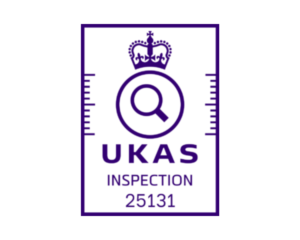The leading professional bodies of the built environment have joined forces to align the data standards that are used to manage costing, carbon and building and facilities maintenance, in a bid to clear up confusion and shift the digital focus from new build to whole life building performance.
In what has been described as “a momentous game changing moment”, RICS, BESA, NBS*and other interested parties have created a roundtable collaboration forum, in response to government demand for the public sector to enhance the way it uses digital life cycle costing, carbon assessment and digital led maintenance.
As part of its Building Better Buildings programme, the Government Property Function (GPF) has instigated a root and branch reform, based on the adoption of its FM asset data standards, to provide consistency in how asset data is captured and exploited. This is intended to improve asset performance, lower running costs, reduce carbon emissions, as well as optimising the level of maintenance carried out to an appropriate budget.
The Government Property Agency (GPA), which manages the government’s offices estate, has been charged with delivering major efficiency improvements across its vast portfolio. The use of better building information is pivotal to this, and the GPA is working with the industry bodies to embed data standards into its estate, as a ‘living laboratory’ that will use data alignment for specific information purposes, across the entire asset life cycle, and realise ‘real life’ benefits.
Cost of ownership
“More than 80% of the total cost of ownership of any built asset is in ongoing operation and maintenance, but many clients find it almost impossible to get a clear handle on how much they should be spending and on what,” said BESA chief executive David Frise.
“Many building owners and occupiers tell us they are sick and tired of not having access to complete cost and asset specific data about how their buildings need to be designed and built in a way that will optimise how they are run and maintained. They now desperately need to cut running costs, whilst make sure their buildings are safe and compliant, and get on with delivering their net zero carbon reduction targets.”
The roundtable data collaboration forum should give them reason for optimism that the industry can be encouraged to stop working “in silos” and start sharing data to inform better decisions/outcomes, he added. It is also trying to address the ongoing problem that decisions made at design stage to cut upfront expenditure often led to much higher lifetime maintenance costs, therefore passing on the problem to clients and people further down the supply chain.
The market for UK building maintenance is estimated at over £60 billion/per annum1, but the industry bodies fear that a significant proportion of that money is not being properly targeted to reduce running costs and carbon emissions, with inappropriate funds allocated to keep buildings operating safely and efficiently.
Delegates at the BESA National Conference on October 20th will have the chance to engage with this process by taking part in an open forum with representatives from each of the data standard bodies.
Speakers will explain how the standards will be aligned and will invite feedback from delegates. The roundtable group’s intention is to evolve the use of data into a cost and maintenance ‘playbook’ that will explain how quantity surveyors and FM/maintainers should set about gathering asset data using digital tools.
The panel will outline how SFG20, the industry standard for building maintenance developed by BESA, will be aligned with the RICS New Rules of Measurement (NRM) for building works and the BIM Construction Classification (Uniclass) developed by NBS, together with CIBSE’s Guide M best practice guidance for management and maintenance of engineering services.
This is intended to bridge the gap between the collection of digital information at the construction stage or during refurbishment projects, to help building managers develop accurate asset registers that can inform maintenance plans, asset renewal/life cycle plans, and carbon assessments.
“BIM models contain 80% of the data needed to create robust maintenance programmes, but most surveyors are not using it – it is being lost at handover,” explained Frise.
By aligning SFG20 schedules with Uniclass classification and NRM 3 cost structures and CIBSE’s Guide M expected life tables, this can ensure the necessary information from ‘as built’ projects are handed over, to enable fully costed plans for the lifecycle operation and maintenance of buildings, saving precious time and money.
Uniclass is embedded in the BIM process, but all the industry data bodies have agreed that there is a major problem at project handover, which leads to much of the design information not being used in surveys to inform setting the relevant maintenance schedules and upload data into CAFM systems.
Guess work
Frise added that there was currently too much “guess work” involved in the production of life cycle cost plans, carbon assessment and maintenance programmes and, as a result, operation and maintenance is typically undervalued and, therefore, often “little more than a tick box exercise”.
As part of the process of aligning standards, BESA has developed SFG20 Resource Modeller, a tool that allows maintenance professionals to cost their requirements and identify exactly what resource is required, also helping to identify what is the defendable running cost needed for the set service levels.
The data alignment mapping work is well underway and, by bringing all the UK industry standards parties together, the group feels there is light at the end of the tunnel for achieving digitally enabled and fully planned and costed maintenance programmes.
“Getting this right will be vital for making our buildings more efficient, safer, healthier and to put us on the road to net zero,” said Frise. “Come along to our open forum at the BESA National Conference to learn about this historic use of data standards development, have your say, and help us produce the Cost and Maintenance Playbooks that will take the industry into a new era.”
*The leading professional bodies are:
BESA – the Building Engineering Services Association
RICS – the Royal Institution of Chartered Surveyors
NBS – the National Building Specification
For more information go to: www.sfg20.co.uk
To attend the BESA National Conference including the maintenance open forum go to: www.theBESA.com/conference
1 Economic significance of maintenance report 2022, BCIS.
Image: Shutterstock









